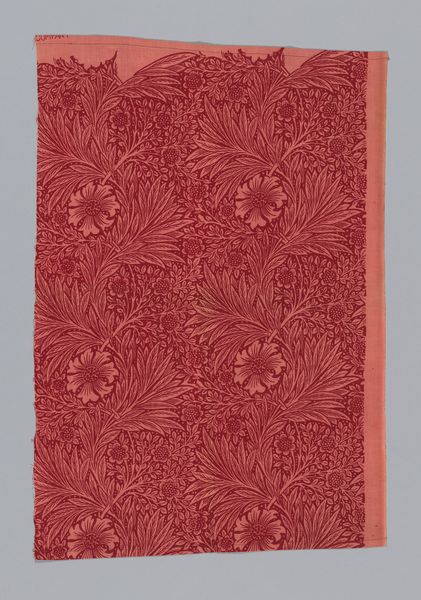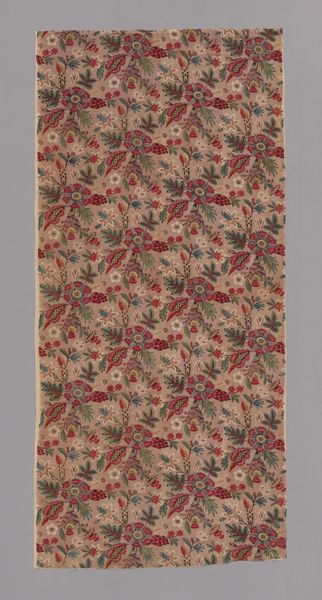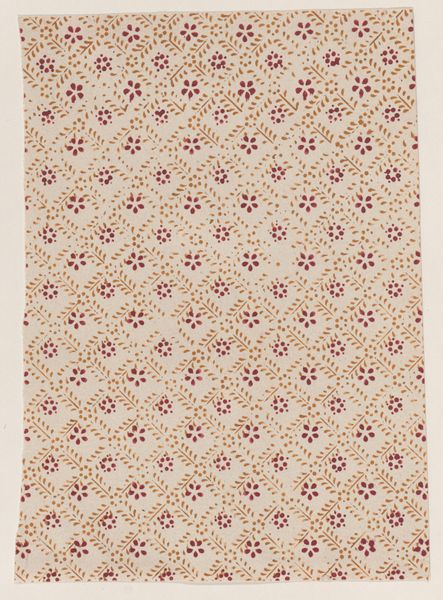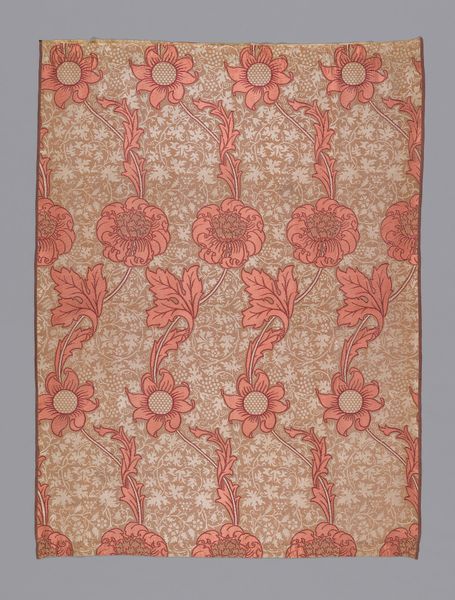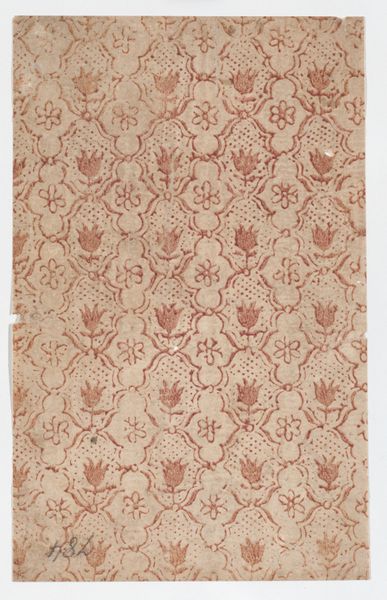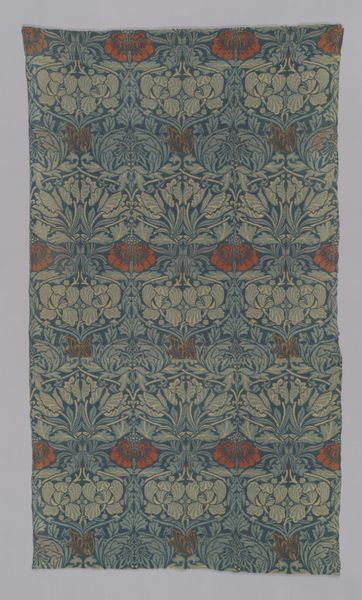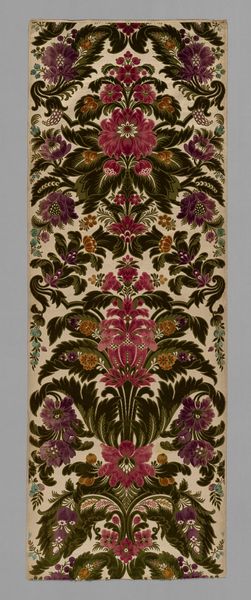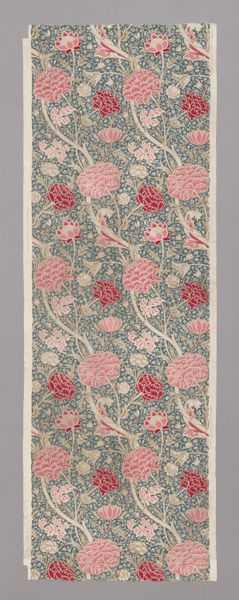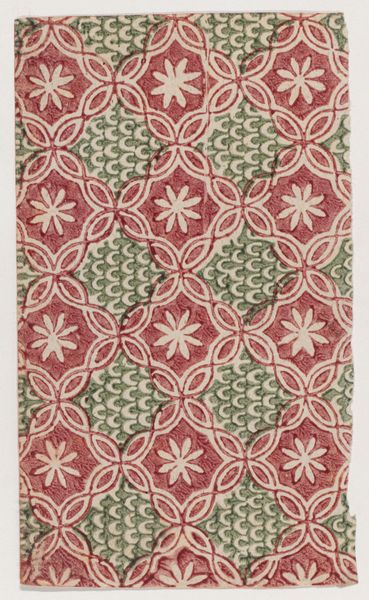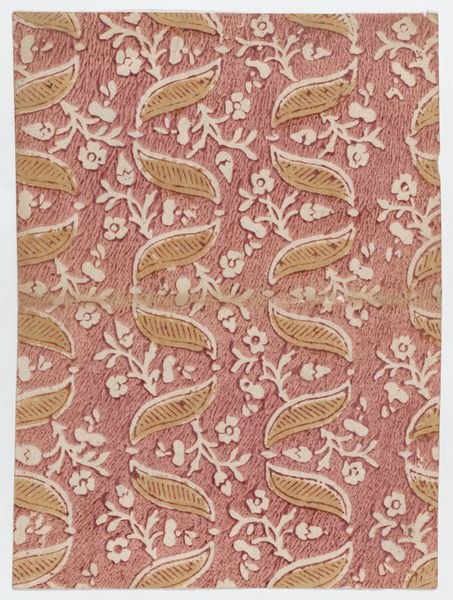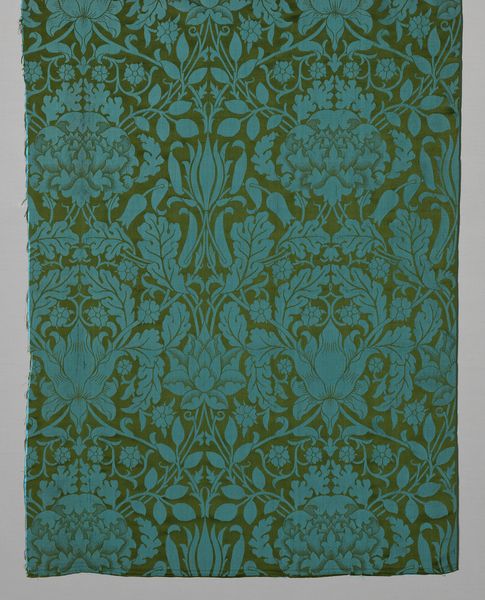
Dimensions: 320.3 × 84.8 cm (126 1/8 × 33 3/8 in.)
Copyright: Public Domain
Curator: Before us hangs an intriguing piece: a 19th-century textile panel crafted under the visionary direction of William Morris. It resides here at the Art Institute of Chicago. Editor: It’s quite striking—a dense, almost hypnotic pattern of irises, I think? The salmon backdrop gives it a warm, inviting, but also slightly overwhelming feel. Curator: Precisely. The ‘Panel’, as it's simply known, exemplifies Morris's dedication to reviving traditional textile production. He aimed to challenge industrialization by celebrating handcrafted work. What interests me is the subtle power of design here to evoke ideals about labour and nature. Editor: You know, examining the means of production here really emphasizes that connection. The repetitive nature of weaving or printing these patterns...it’s labour intensive! Each flower, each line, is a testament to the human touch that Morris championed. This repetitive pattern also echoes labour; in ways this decorative art also documents work. Curator: Indeed. The Arts and Crafts movement to which Morris belonged, directly critiqued the social alienation engendered by factory production. He offered not just a beautiful object, but a paradigm shift towards re-valuing artisanship within Victorian society. And beyond this social mission it democratized what was valued as 'high art'. Editor: It also highlights the inherent tension, doesn't it? While romanticizing craftsmanship, these pieces often catered to the wealthy elite who could afford such laboriously produced items, therefore creating exclusive clubs of appreciation. The material reality contradicts the stated ethos! Curator: A valid point, reflecting a wider socio-economic paradox of the time. Nevertheless, pieces like these forced a public reckoning, and instigated questions about quality of work. Editor: When we consider it alongside the original context of say, a wallpaper adorning the walls of an upper-class home, its accessibility suddenly comes into question. It almost feels like a preserved fragment from another reality, of luxury and labour intertwined. Curator: And, here it is today sparking different points of consideration. Thanks for that layered examination. Editor: Thank you for bringing a greater socio-historical framework. It is much appreciated.
Comments
No comments
Be the first to comment and join the conversation on the ultimate creative platform.
